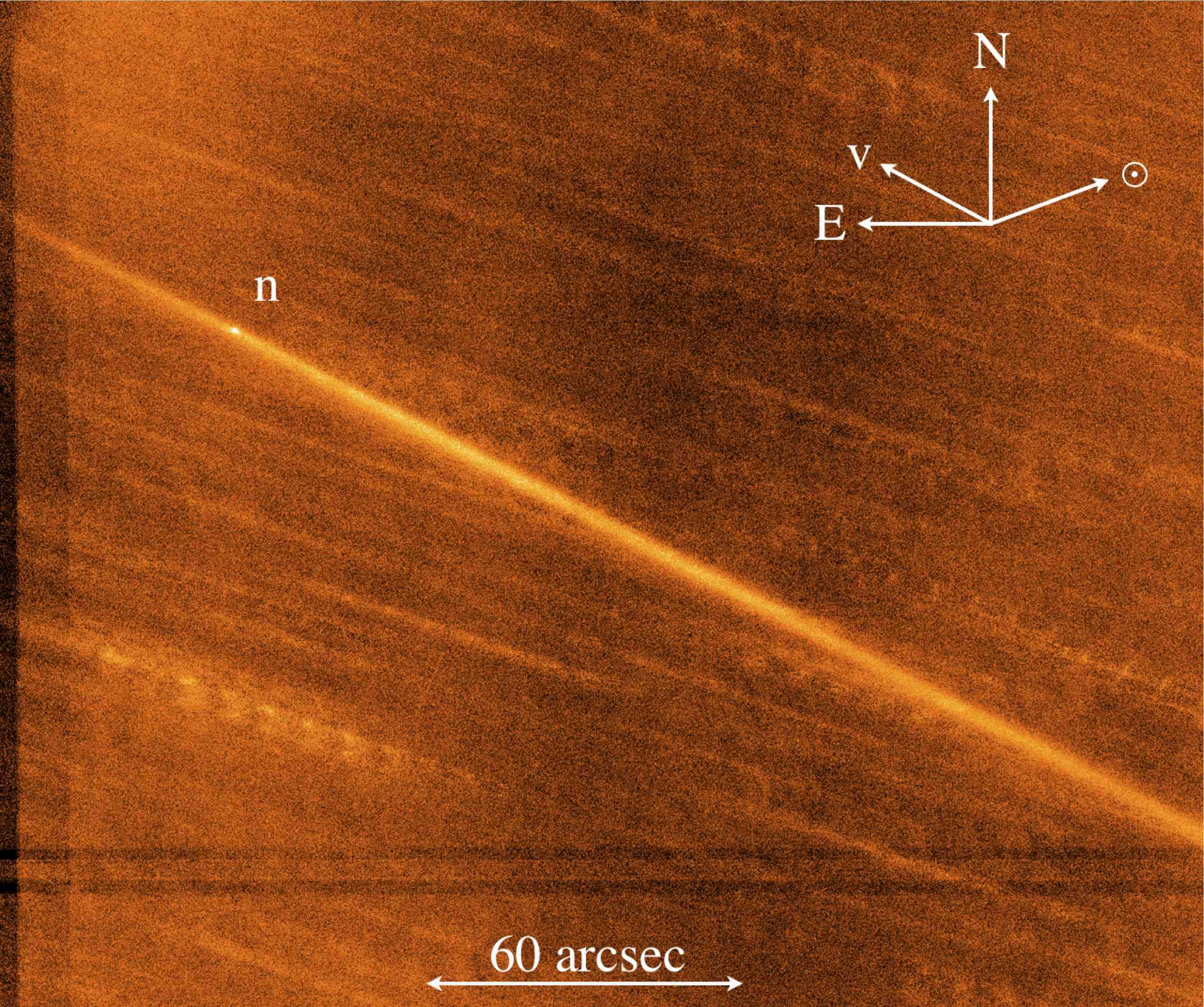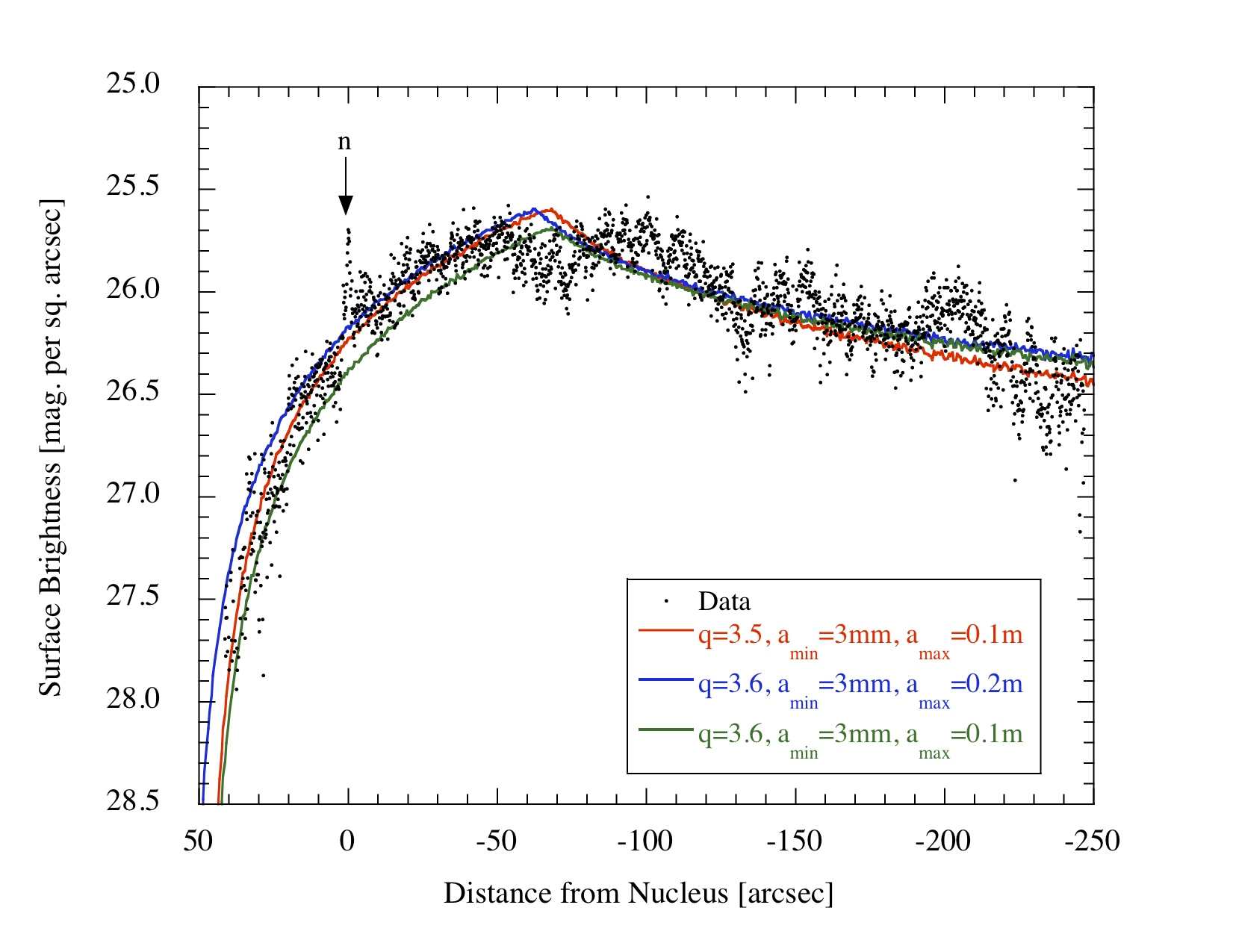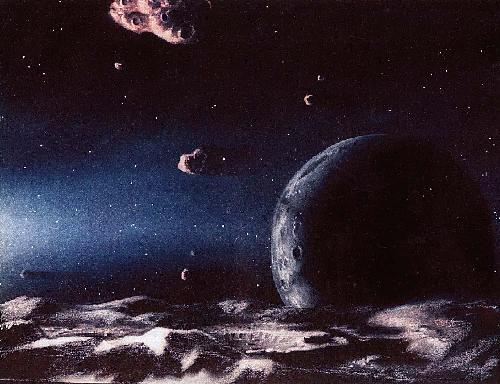

| One Orbit Later |
|---|
Three years of exposure to sunlight have swept all particles smaller than about 3 mm in radius out of the Keck field of view, leaving behind only larger particles. The average size in the field is 20 mm while particles up to 200 mm exist at certain locations along the dust trail. The total mass of all the particles is about 5x10^8 kg (500,000 tonnes), which is about 10% of the mass of the nucleus. (The nucleus is also visible in the Keck data).


Caption: The panel on the left shows the Keck image of P/2010 A2 taken on UT 2012 October 14, computed from the median of nine, non-sidereally tracked R-filter images each of 600 s duration. The cardinal directions are marked, as are the direction to the Sun and the projected heliocentric velocity vector. The nucleus is marked ``n'' on the trail towards the North-East. The stippled background is due to imperfectly removed field galaxies.
The panel on the right shows The R-band surface brightness measured along the axis of the trail and averaged over a region 8.1arcsec perpendicular to the trail. Distances are measured relative to the point-like nucleus ``n'', with positive distances being East. The red line shows a smooth function fitted to the data to guide the eye. The B-band surface brightness profile is indistinguishable within the measurement uncertainties. Bumps on the profile are background subtraction errors.
The Keck observations are described in a paper included here as a
pdf file (Jewitt, Ishiguro and Agarwal (2013) Astrophysical Journal Letters).
David Jewitt
BACK to P/2010 A2 Home
 |
 |
|
| Comet | Jewitt | Kuiper |
|---|